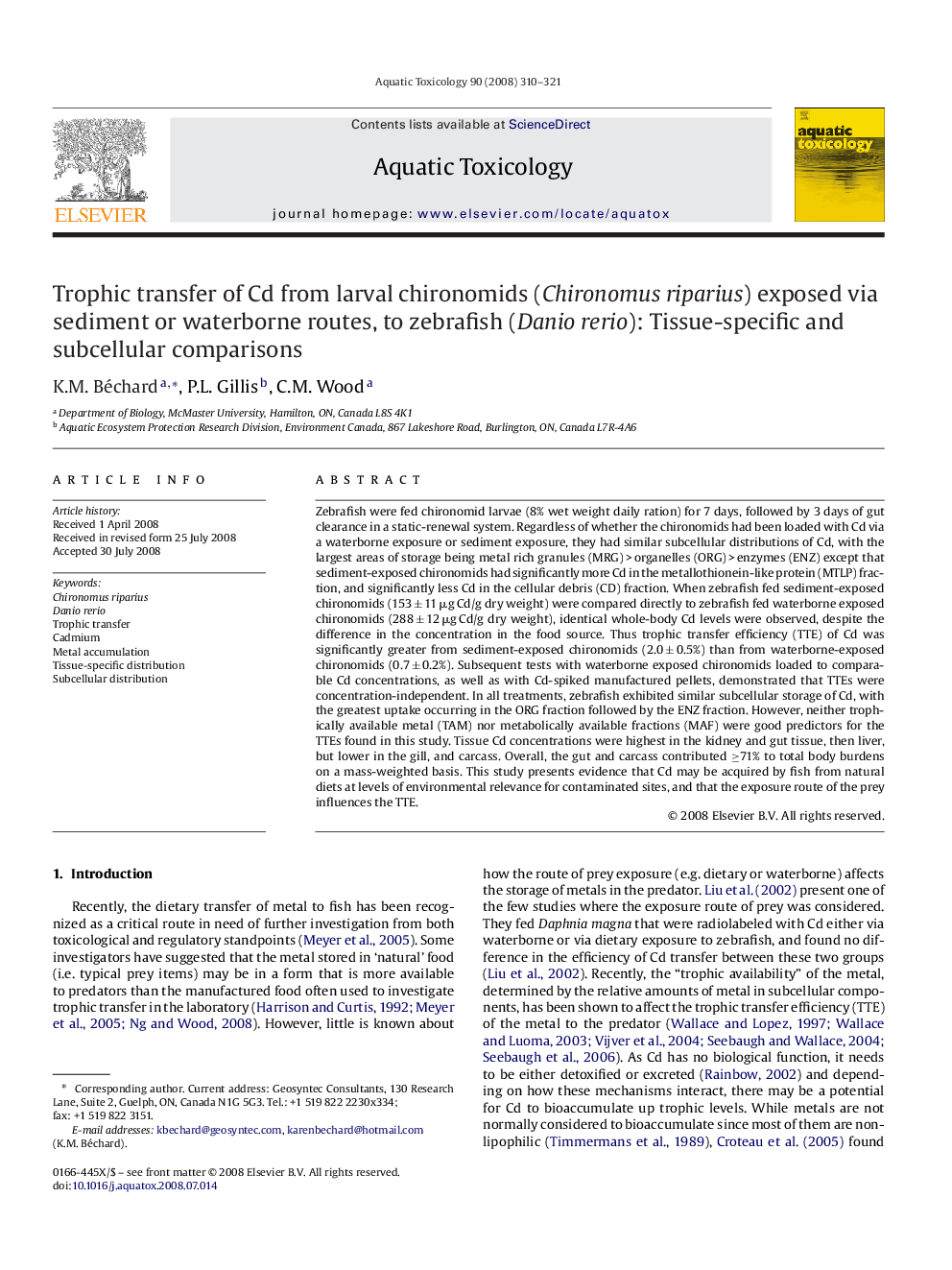| کد مقاله | کد نشریه | سال انتشار | مقاله انگلیسی | نسخه تمام متن |
|---|---|---|---|---|
| 4530434 | 1625994 | 2008 | 12 صفحه PDF | دانلود رایگان |

Zebrafish were fed chironomid larvae (8% wet weight daily ration) for 7 days, followed by 3 days of gut clearance in a static-renewal system. Regardless of whether the chironomids had been loaded with Cd via a waterborne exposure or sediment exposure, they had similar subcellular distributions of Cd, with the largest areas of storage being metal rich granules (MRG) > organelles (ORG) > enzymes (ENZ) except that sediment-exposed chironomids had significantly more Cd in the metallothionein-like protein (MTLP) fraction, and significantly less Cd in the cellular debris (CD) fraction. When zebrafish fed sediment-exposed chironomids (153 ± 11 μg Cd/g dry weight) were compared directly to zebrafish fed waterborne exposed chironomids (288 ± 12 μg Cd/g dry weight), identical whole-body Cd levels were observed, despite the difference in the concentration in the food source. Thus trophic transfer efficiency (TTE) of Cd was significantly greater from sediment-exposed chironomids (2.0 ± 0.5%) than from waterborne-exposed chironomids (0.7 ± 0.2%). Subsequent tests with waterborne exposed chironomids loaded to comparable Cd concentrations, as well as with Cd-spiked manufactured pellets, demonstrated that TTEs were concentration-independent. In all treatments, zebrafish exhibited similar subcellular storage of Cd, with the greatest uptake occurring in the ORG fraction followed by the ENZ fraction. However, neither trophically available metal (TAM) nor metabolically available fractions (MAF) were good predictors for the TTEs found in this study. Tissue Cd concentrations were highest in the kidney and gut tissue, then liver, but lower in the gill, and carcass. Overall, the gut and carcass contributed ≥71% to total body burdens on a mass-weighted basis. This study presents evidence that Cd may be acquired by fish from natural diets at levels of environmental relevance for contaminated sites, and that the exposure route of the prey influences the TTE.
Journal: Aquatic Toxicology - Volume 90, Issue 4, 11 December 2008, Pages 310–321